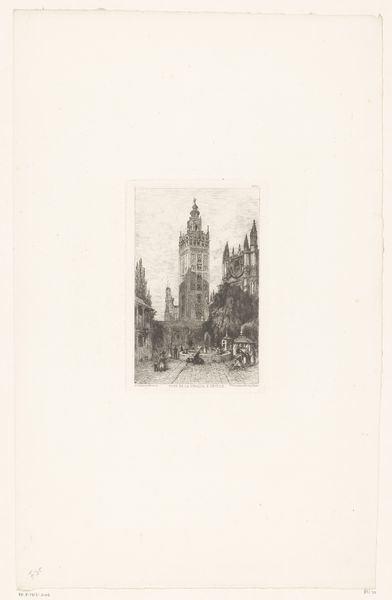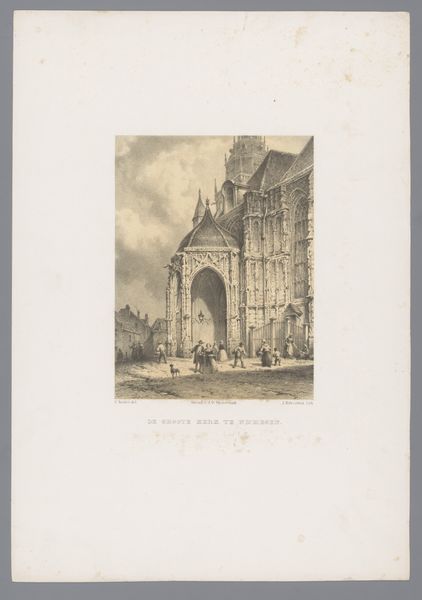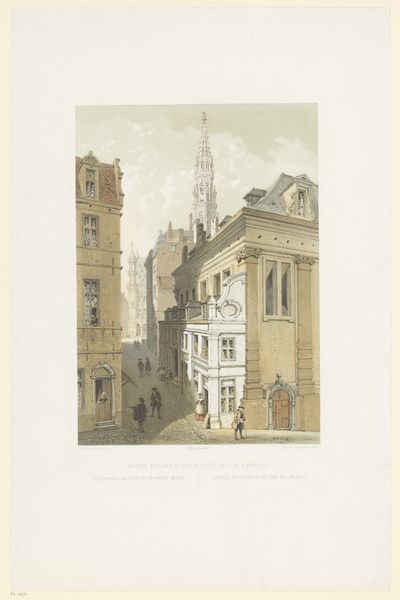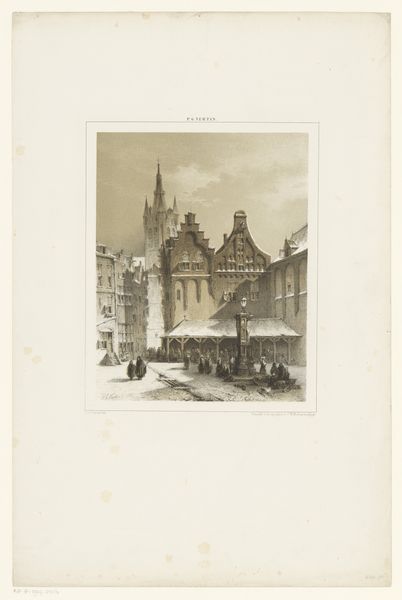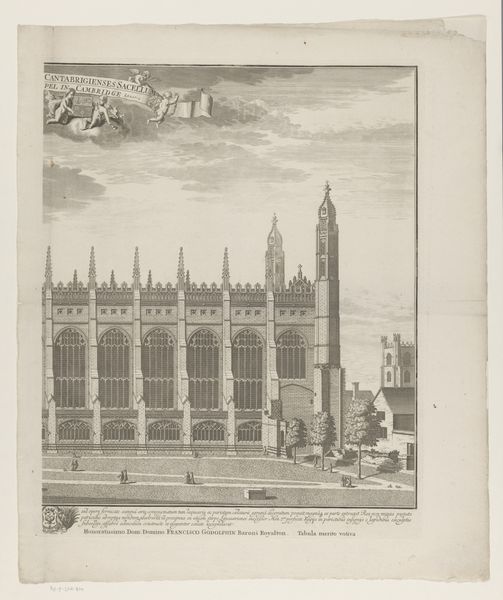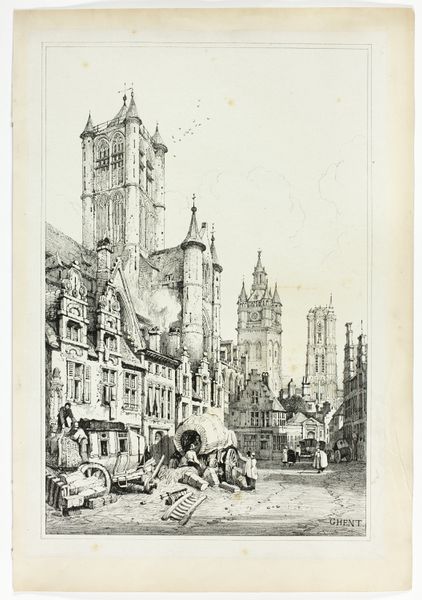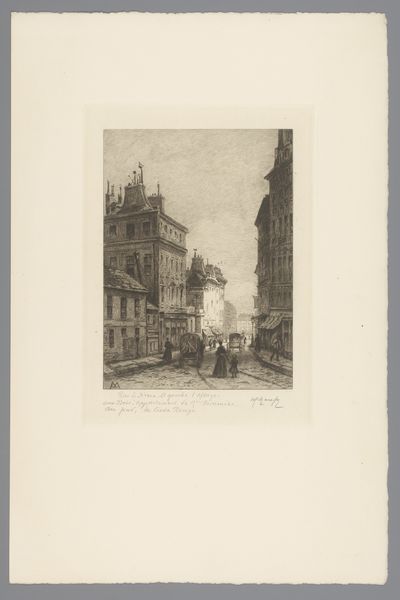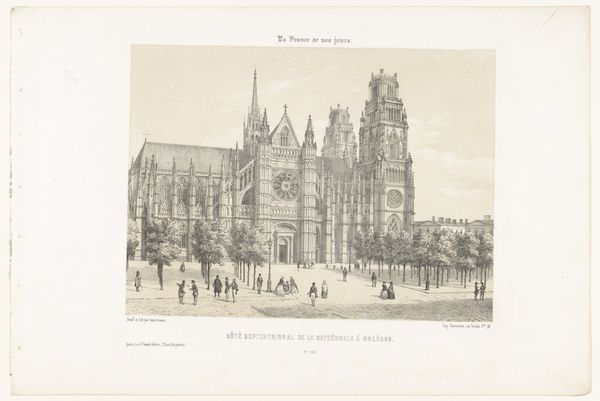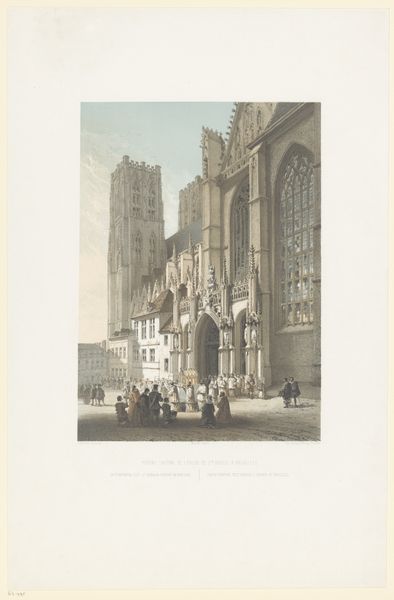
print, etching, engraving, architecture
# print
#
etching
#
landscape
#
cityscape
#
history-painting
#
engraving
#
architecture
#
realism
Dimensions: height 525 mm, width 350 mm
Copyright: Rijks Museum: Open Domain
Curator: Before us is a print titled "Gezicht op het stadhuis te Leuven" by François Stroobant, likely created sometime between 1852 and 1878. It's currently housed at the Rijksmuseum. Editor: Immediately, I am struck by the dreamlike quality despite the rather precise architectural depiction. The scene has a very specific feel, as though lifted from a legend. Curator: Indeed. Stroobant employed etching and engraving techniques, mediums which themselves have long histories, to depict this cityscape. We see figures on horseback which imply transit and even commerce. What meanings do you perceive at play? Editor: Well, the Town Hall of Leuven, of course, is the dominant symbol here. Look at its impossibly ornate facade – it evokes civic pride, sure, but it also communicates a profound reach for transcendence. Each little statue and window, layered upon layer...it’s overwhelming! Curator: I’m drawn to how the printmaking process allowed for the reproduction of this image. Consider the social impact of disseminating views of Leuven's civic architecture. It makes otherwise localized icons of statehood newly portable, mass-produced for various levels of access. Editor: But see how that distribution serves the underlying symbolism! The architectural detail of that Town Hall is presented with meticulous accuracy to underscore the ambition and the almost obsessive faith of its makers and commissioners. These buildings *were* built and these are signs of what and why. Curator: The deliberate labor invested, yes – the etched lines mimicking stone, attempting to hold history captive within a manufactured object… fascinating how technique and aspiration become entwined. Editor: I find it interesting to think about how Stroobant captured that impulse, translating material grandeur into something both ethereal and concrete, an imprint of enduring civic hope made physical through distribution. Curator: A reminder, I suppose, that images carry power but it's the materiality that gives it to them. Editor: Or is it materiality which facilitates symbolic transfer, bringing grand buildings into more hands than otherwise ever could, enshrining collective memory with each careful line? Curator: Perhaps in its essence. These conversations of our values. Food for future thoughts.
Comments
No comments
Be the first to comment and join the conversation on the ultimate creative platform.
